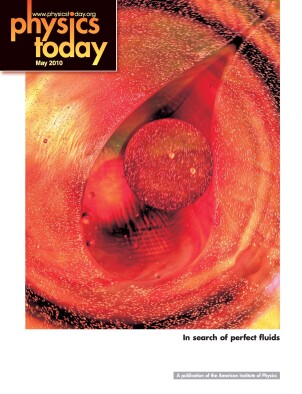Astrophysical jets and solar loops in the lab
DOI: 10.1063/1.4796245
At the center of many an active galaxy lies an exceedingly powerful engine that, among other things, shoots out collimated jets of fast-moving plasma. Such jets can extend well beyond the galaxy’s luminous boundary, ending in vast lobes that light up the intergalactic medium in the radio band. Closer to home, the Sun’s atmosphere has many a plasma-filled magnetic loop, the dynamics of which are somewhat mysterious. In February, at the joint meeting of the American Physical Society and the American Association of Physics Teachers, Paul Bellan (Caltech) reported on his group’s recent experiments that shed light on both systems. The experimenters used the large currents and magnetic fields of spheromak technology to create plasma jets in a very large vacuum chamber, which ensured that the plasma configurations were unaffected by walls. With a preexisting magnetic field “frozen in,” the physicists puffed some gas through an electrode, switched on a current, and watched as a plasma jet formed, self-collimated, underwent a kink instability, and then detached when the electric current was strong enough. In a different magnetic-field geometry, the figure shows counterpropagating collimated plasma jets—red hydrogen from the cathode and green nitrogen from the anode—colliding head-on within an arched magnetic loop, much like those seen in the Sun’s corona. Bellan also developed a physical model for the self-collimation and a dusty-plasma dynamo mechanism suitable for generating actual astrophysical jets. (P. M. Bellan et al., invited APS/AAPT talk H3.2, 2010. Preprint available from the author.)

